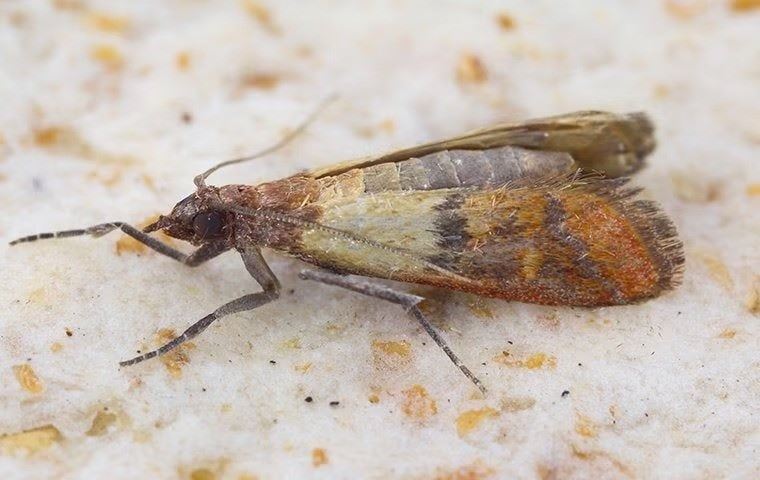
Indian Meal Moths
Get started with a free, no obligation quote!
Indian Meal Moth Identification & Prevention
Seen worldwide, this stored product moth is also one of the easiest to identify.
Description

One of the most common residential stored product insects can also be more than a nuisance in some food plant and warehousing situations. Cosmopolitan in distribution, these insects may be found in nature and infest a structure from its surroundings, especially in the Corn Belt. All of the damage to food is produced by the larval stage as the adults lack mouthparts. Locating and disposing of the infested food source is the best method residentially. Indian meal moths respond well to pheromone monitoring programs in commercial environments and stress the importance of good warehousing and sanitation practices.
Biology And Behavior
- Indian meal moths are small moths with a 5/8” wingspan, cooper to bronze-colored scales cover the outer 1/3 of the wing and a thin brown band leading to a pale tan inner 1/2 of the wing.
- Larvae are 1/2” long, dirty white sometimes, with pink or green tints.
- Larvae feed on a tunnel-like silken case covered in frass and debris.
- Feeding activity from larvae is easy to spot as it consists of silken webbing on the top surface of the infested food source.
- Larvae will crawl away from the food source to pupate, usually going to high corners or ceilings to spin their small cocoon.
- Indian meal moths will feed on various sources, ranging from dried pet food, birdseed, dried peppers, nuts, and even dried flower arrangements in residential settings to whole wheat and cornmeal in commercial locations.

What's the Action Advantage?
Find Out What Makes Us Different!
-
Environmentally-Friendly Products Available
-
After-Hours Answering Service Available
-
70+ Certified Pest Management Professionals
-
Trusted by the Community Since 1946